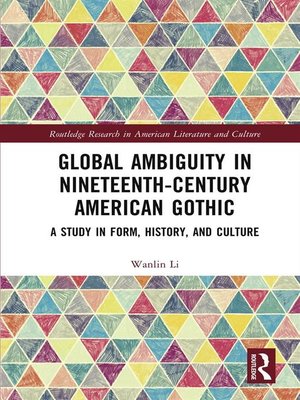Global Ambiguity in Nineteenth-Century American Gothic
ebook ∣ A Study in Form, History, and Culture · Routledge Research in American Literature and Culture
By Wanlin Li

Sign up to save your library
With an OverDrive account, you can save your favorite libraries for at-a-glance information about availability. Find out more about OverDrive accounts.
Find this title in Libby, the library reading app by OverDrive.



Search for a digital library with this title
Title found at these libraries:
| Library Name | Distance |
|---|---|
| Loading... |
As part of a larger attempt to understand the dynamic interactions between gothic form and ideology, this volume focuses on a strong formal feature of the American gothic, "global ambiguity," and examines the important cultural work it performs in the nineteenth-century history of the genre.
The author defines "global ambiguity" as occurring in texts whose internal evidence supports equally plausible and yet mutually exclusive interpretations. Combining insights from narrative theory and cultural studies, she investigates the narrative origin of global ambiguity and the ways in which it produces culturally meaningful readings. Canonical works and obscure ones from American gothic authors such as Charles Brockden Brown, Edgar Allan Poe, Nathaniel Hawthorne, Herman Melville, Louisa May Alcott, and Henry James are reexamined. This study reveals that the nineteenth-century American gothicists developed the gothic into an aesthetically sophisticated mode that engaged intensely with the pressing problems of American society, including moral citizenship, slavery, and the social status of women, and reimagined social realities in politically constructive manners.
Literary scholars, students, and general readers interested in gothic literature, American literature, or narrative theory will find this book informative and inspiring.







